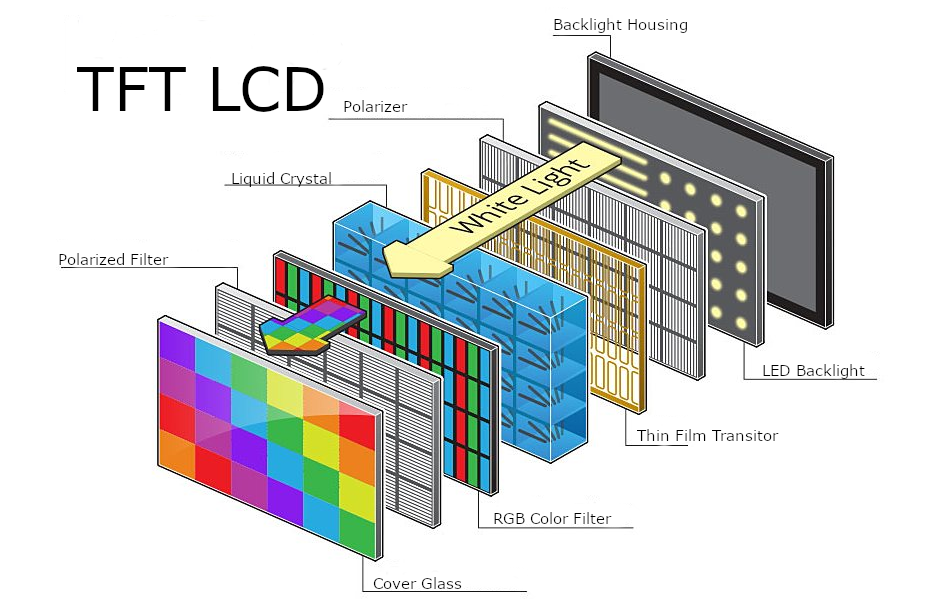
 Global Hotline
Global Hotline
Liquid Crystal Display (LCD) is a type of flat-panel display technology that uses the optical properties of liquid crystals to produce images. Liquid crystals themselves do not emit light but control the passage of light through the screen by altering the alignment of the liquid crystal molecules.
The working principle of an LCD is based on the optical properties of liquid crystals. Liquid crystals are a state of matter that is intermediate between liquid and solid, and their molecules can change orientation when subjected to an electric field, thereby altering the polarization of light. The operation of an LCD can be summarized in several key steps:
Backlight:
LCD screens do not emit light by themselves, so they require a backlight to illuminate the screen. The backlight is typically provided by LEDs (Light Emitting Diodes), which shine light through various parts of the display.
Polarizers:
An LCD typically includes two polarizing filters (one at the front and one at the back of the display). The first polarizer polarizes the incoming light, while the second allows light to pass through only if its polarization is aligned with the second polarizer. The liquid crystal molecules alter their alignment in response to an electric field, thus changing the polarization of the light passing through the screen.
Liquid Crystal Layer:
The liquid crystal layer is located between the two polarizers. The liquid crystal molecules can rotate when an electric field is applied, changing the direction of the light's polarization. Specifically, when the alignment of the liquid crystal molecules changes, the light's propagation direction is altered, thereby affecting the amount of light passing through the display.

Electrodes and Control Circuitry:
Electrodes (usually made of transparent indium tin oxide) are arranged at each pixel location on the screen, and the control circuitry adjusts the alignment of the liquid crystal molecules. By applying different voltages, the orientation of the liquid crystal molecules can be controlled, which in turn controls the amount of light passing through the screen.
Color Generation:
For color displays, the LCD uses RGB (Red, Green, Blue) filters to create various colors by combining different light intensities. Each pixel is made up of three subpixels (red, green, and blue), and by adjusting the brightness of each subpixel, a wide range of colors can be produced.
The working principle of an LCD is to control the alignment of liquid crystal molecules, which in turn alters the polarization of light, thus regulating the amount and color of light passing through the display. Since liquid crystals do not emit light, an external backlight is required. With precise electrical control, LCDs can display high-resolution, low-power images, making them widely used in devices such as televisions, smartphones, computer monitors, and watches.